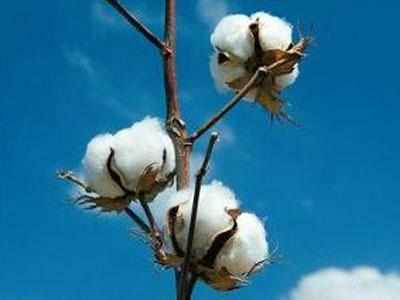- News
- Business News
- India Business News
- Cash crunch affects cotton arrivals in new season
Trending
This story is from December 3, 2016
Cash crunch affects cotton arrivals in new season
The impact is expected to be pronounced on the unorganised segment, which forms a large part of the domestic textile sector where cash transactions are more prevalent, as reduction in currency circulation would temporarily affect their routine business transactions, observers said.

(File photo for representation)
COIMBATORE: The ban on high value notes has affected cotton arrivals in the market due to widespread prevalence of cash payments to farmers, industry officials said. Demonetisation would hit retailers of winter-wear clothing and manufacturers focused on the domestic market, who witness 60%-70% of their annual sales during October-February.
“Farmers are not bringing cotton to the mandis.There has been a 30% drop in arrivals,” said Atul P Asher, secretary, Indian Cotton Federation (ICF). “Business has come down and only 10% of the ginning factories are operating,” he said. “Cotton arrivals in Gujarat has been affected by the demonetisation,” said Ashok Damji Daga, director, ICF.
Prices of the popular Shankar-6 cotton have gone up by about 1,000 per candy (a candy is about 355 kgs) in the last three weeks, Asher said. “Prices continue to remain firm,” he said. “Farmers are holding on to inventories resulting in a fall in daily cotton arrivals in November,” analysts at ratings agency ICRA said.
This has resulted in artificial supply shortage and bottoming of cotton prices, they said. While the situation is bad in Gujarat, the largest producer of cotton in the country, it is much better in Maharashtra, which is also a leading cotton growing state.
The impact is expected to be pronounced on the unorganised segment, which forms a large part of the domestic textile sector where cash transactions are more prevalent, as reduction in currency circulation would temporarily affect their routine business transactions, observers said.
“The resulting inventory accumulation with the retailers will, in turn, cause deferment of purchases from apparel/home-textile manufacturers focused on domestic market in the near term, besides resulting in stretched payments,” ICRA said.
“This, in turn, will affect the cash flow of the textile industry and is likely to drive a constraint in the demand for the entire textile value-chain,” the agency said. The harvest season for cotton begins in October, with major cotton arrivals happening till March.
New cotton arrivals are typically accompanied by softening of cotton prices from the levels during April-September. “The slowdown in cotton arrivals is a short-term phenomenon, which has already started to correct, as farmers have gradually started accepting alternate modes of payments,” ICRA said.
“Farmers are not bringing cotton to the mandis.There has been a 30% drop in arrivals,” said Atul P Asher, secretary, Indian Cotton Federation (ICF). “Business has come down and only 10% of the ginning factories are operating,” he said. “Cotton arrivals in Gujarat has been affected by the demonetisation,” said Ashok Damji Daga, director, ICF.
Prices of the popular Shankar-6 cotton have gone up by about 1,000 per candy (a candy is about 355 kgs) in the last three weeks, Asher said. “Prices continue to remain firm,” he said. “Farmers are holding on to inventories resulting in a fall in daily cotton arrivals in November,” analysts at ratings agency ICRA said.
This has resulted in artificial supply shortage and bottoming of cotton prices, they said. While the situation is bad in Gujarat, the largest producer of cotton in the country, it is much better in Maharashtra, which is also a leading cotton growing state.
“The adverse impact of the demonetisation on disposable incomes and consumer spending has resulted in a slowdown in domestic demand for apparels and other end-products of textile industry in the immediate term,” ICRA said.
The impact is expected to be pronounced on the unorganised segment, which forms a large part of the domestic textile sector where cash transactions are more prevalent, as reduction in currency circulation would temporarily affect their routine business transactions, observers said.
“The resulting inventory accumulation with the retailers will, in turn, cause deferment of purchases from apparel/home-textile manufacturers focused on domestic market in the near term, besides resulting in stretched payments,” ICRA said.
“This, in turn, will affect the cash flow of the textile industry and is likely to drive a constraint in the demand for the entire textile value-chain,” the agency said. The harvest season for cotton begins in October, with major cotton arrivals happening till March.
New cotton arrivals are typically accompanied by softening of cotton prices from the levels during April-September. “The slowdown in cotton arrivals is a short-term phenomenon, which has already started to correct, as farmers have gradually started accepting alternate modes of payments,” ICRA said.
End of Article
FOLLOW US ON SOCIAL MEDIA
















